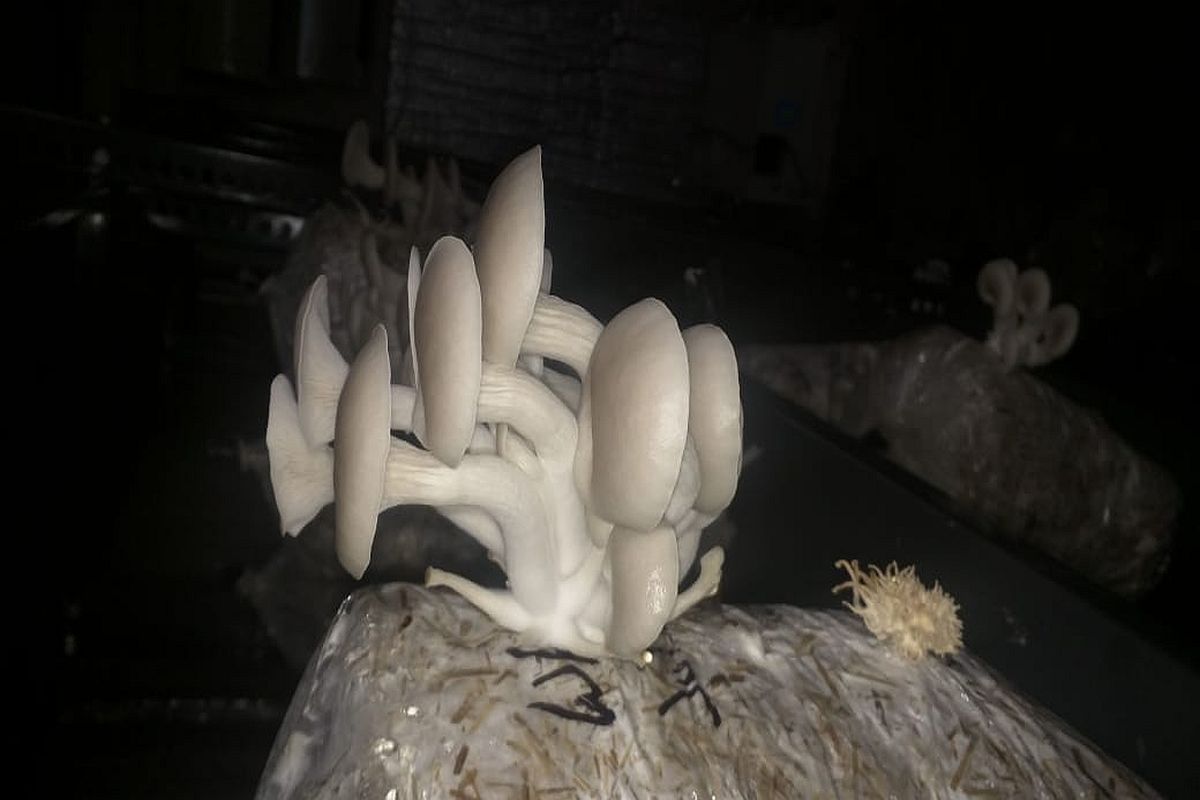Odisha forest personnel pay last respect jumbo Khersel
The Forest Department personnel of Odisha’s Hirakud wildlife division laid wreaths and garlands to pay respect to a 65-year-old captive male elephant after the pachyderm died a natural death.
The rainy season has always been a time of anticipation and activity in the sal forests of Junglemahal, where the wild edible mushroom Astraeus hygrometricus, locally known as Kurkur Chhattu, flourishes.

Oyster mushroom (Dhingri). (Photo: SNS)
The rainy season has always been a time of anticipation and activity in the sal forests of Junglemahal, where the wild edible mushroom Astraeus hygrometricus, locally known as Kurkur Chhattu, flourishes. These mushrooms, thriving in the red laterite regions of Bankura, West Midnapore and Jhargram districts, play a crucial role in the local economy and ecology. However, environmental challenges and unsustainable practices are threatening this vital resource.
Kurkur Chhattu mushrooms, valued for their taste and nutritional benefits, are typically found beneath the upper layer of soft sand and laterite soil in dry deciduous sal forests. These mushrooms, abundant during June and July, sell for Rs 120 to 200 per kg in local markets. Middlemen, however, drive prices up to Rs 700 to 800 per kg in larger markets. For many forest fringe families, the sale of these wild mushrooms is a significant source of income, contributing between Rs 2,000 to Rs 10,000 annually, per family.
Apart from their economic value, Astraeus hygrometricus mushrooms are also noted for their health benefits. They are low in fat, rich in fibre, and contain compounds like astrocurcurone and astrocurcurol, which show promising anti-cancer properties. Additionally, they offer protection against heart disease, reduce inflammation, and combat leishmaniasis.
Advertisement
Environmental challenges have significantly impacted the availability of Astraeus hygrometricus. Local climate change, irregular rainfall, and forest fires during the summers have reduced mushroom populations. Furthermore, the replacement of native sal trees with sonajhuri and eucalyptus has exacerbated the problem.
Dr Pravat Kumar Shit, an environmentalist, emphasized that collecting wild mushrooms is a deeply ingrained cultural practice among forest fringe communities. “Women and children, aged 8 to 15, actively participate in this tradition. Early in the morning, small groups venture into the forest to collect mushrooms and other non-timber forest products,” he explained. On good weather days, each collector can gather between 1 to 1.5 kilograms of mushrooms,” he said.
However, the challenges are growing. Rita Mahato, a 35-year-old resident of Natundihi, Salboni, West Midnapore, expressed her concerns about the dwindling mushroom population. “Earlier, selling mushrooms was a good income, but now it has reduced a lot,” she lamented, pointing to the lack of adequate rainfall as a key issue.
Dr Shit highlighted that insufficient forest maintenance and local climate changes have led to a significant decline in mushroom production, adversely affecting the income of forest fringe communities. This loss of income is causing financial stress for many families in Junglemahal.
The sal forests, rich in biodiversity, foster a symbiotic relationship between trees and mycorrhizal fungi, including Astraeus hygrometricus. These fungi form ectomycorrhizal associations with sal trees, crucial for nutrient exchange and maintaining the forest’s ecological balance. The practice of collecting and selling wild mushrooms promotes community cohesion and sustainable forest management, preserving local ecological knowledge.
To ensure the long-term viability of wild mushroom harvesting, promoting sustainable collection practices is essential. Educating local communities about the ecological impact of overharvesting and implementing regulations to protect critical habitats can help preserve this valuable resource.
The combined efforts of local communities and environmentalists are vital to ensuring that Astraeus hygrometricus continues to thrive and support the livelihoods of those who depend on it. Addressing environmental challenges and promoting sustainable practices are imperative to maintaining this tradition and resource, securing the future for the forest fringe communities of Junglemahal, said Dr Shit.
Advertisement